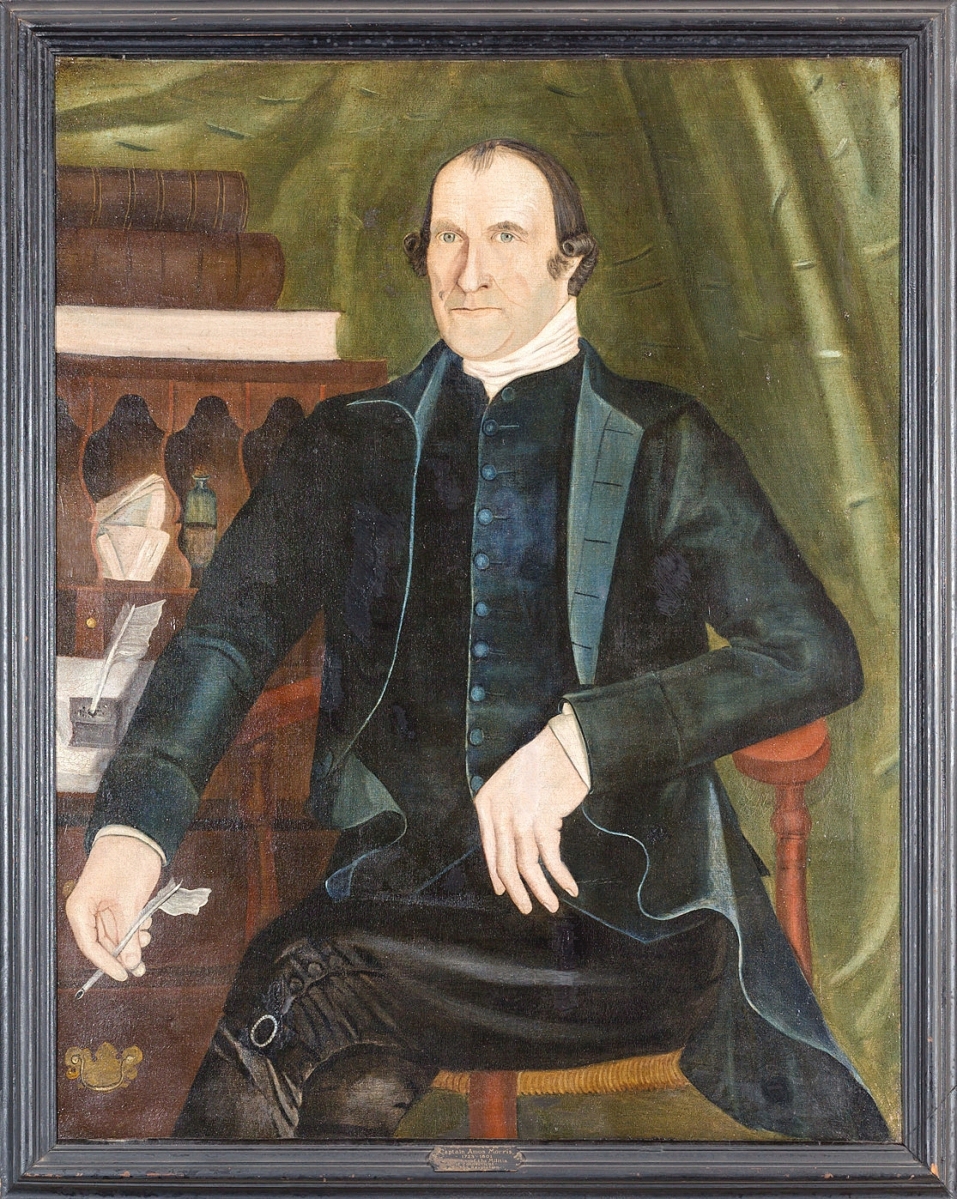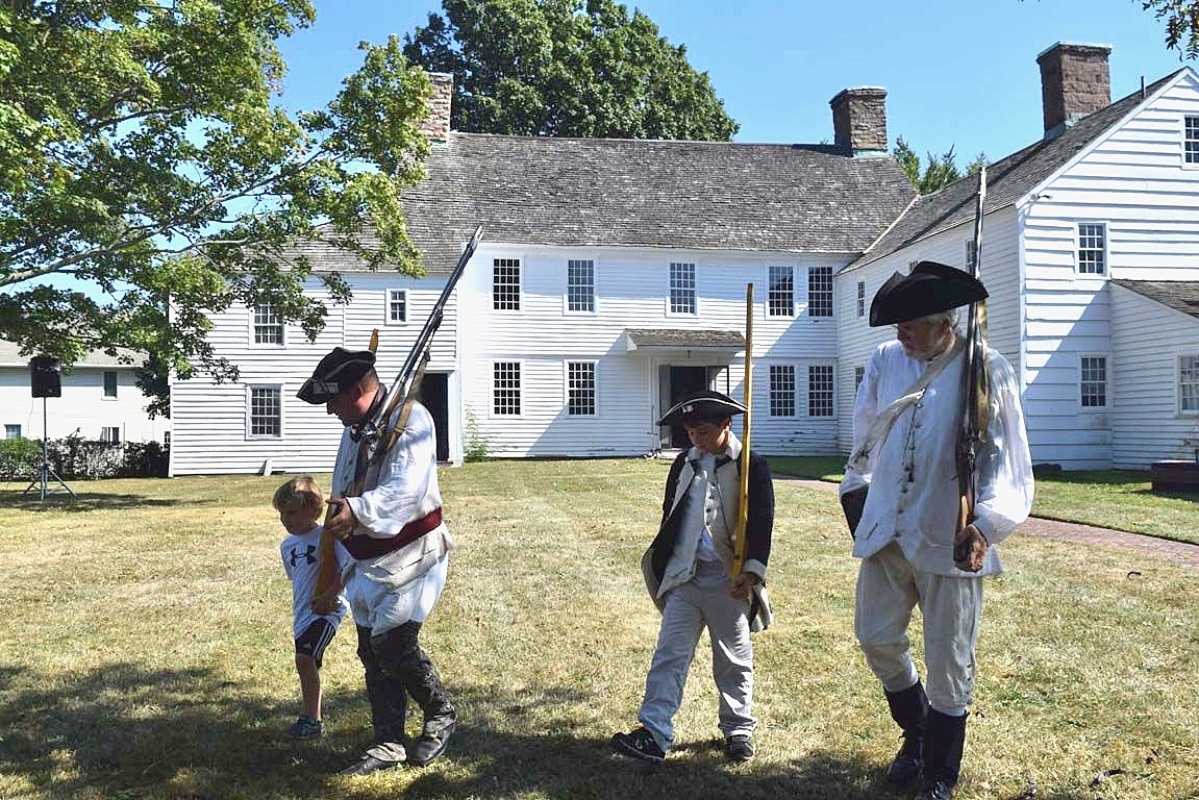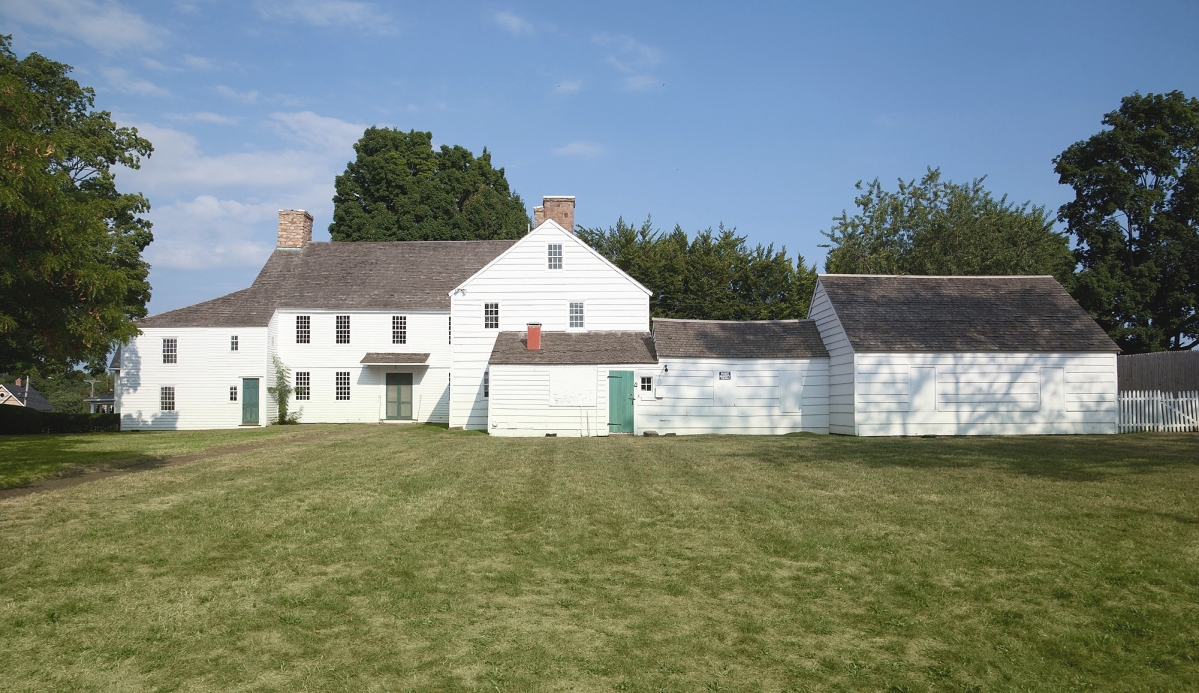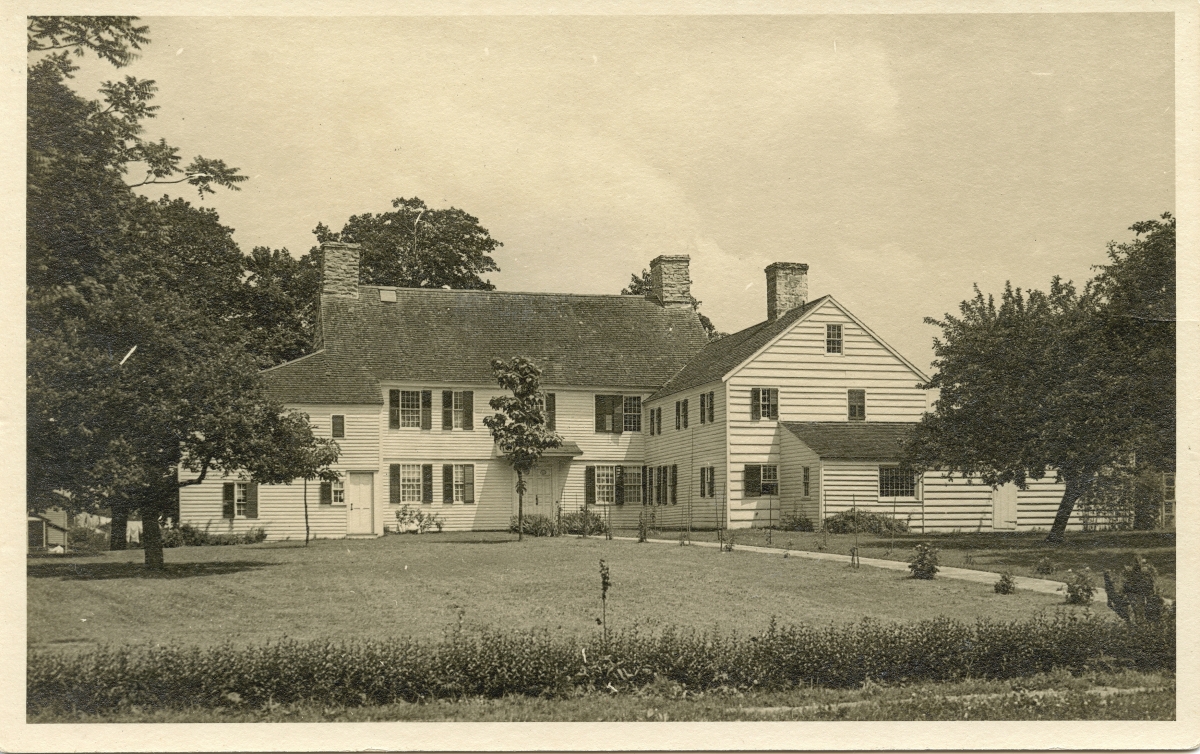By Kathy Czepiel for the New Haven Museum
NEW HAVEN, CONN. – The Pardee-Morris House has a long and storied past beginning with a Revolutionary War invasion by the British, who landed at what was then known as Five Mile Point, and burned down the wharves, saltworks and home of Amos Morris on July 5, 1779 on their march inland to New Haven. Owned and operated by the New Haven Museum, the Pardee-Morris House is one of the few extant Colonial houses in the New Haven area that is open to the public. The 100th anniversary of the first opening of the house to the public will be on June 13.
Morris rebuilt his home, and today, that circa 1780 house stands behind a privet hedge along Lighthouse Road, a winding, residential lane that follows the curve of New Haven Harbor. The road ends at a century-old public park, where an 1847 lighthouse, now decommissioned, looks out over the waters that once gave the British army access to Greater New Haven. The Pardee-Morris House’s “period of significance certainly speaks to the Revolutionary War era, but it’s beyond that,” says Margaret Anne Tockarshewsky, executive director of the New Haven Museum. “It’s really tied to the development of New Haven’s East Shore and Morris Cove,” the neighborhood that later grew up around it and that bears the name of the family that settled it.
Known for most of its history simply as the Morris House, the structure was rebuilt on the foundation of the home that had been destroyed. The Morris family reportedly lived in “a shelter, which [Morris] had built for his hogs, for several months together, and which was the only building he had left,” according to a letter Amos Morris himself wrote, seeking restitution from the government for damages. The newer Morris House was home to an extended family of Morrises, most of whom made their living as farmers. While still owned by later generations, it became a boarding house, a multifamily dwelling, and eventually the prized home of a Colonial Revivalist and distant Morris descendant before being bequeathed to the New Haven Colony Historical Society in 1918. Its final private owner, William Scranton Pardee, instructed in his will that the house should become a “center of civic life of the neighborhood,” stand as a “monument to the style of building and the mode of life of those long since gone,” and “establish and maintain in the premises a library or museum or both for the use of the public.”

Portrait of Captain Amos Morris, attributed to Reuben Moulthrop, circa 1785-91, oil on canvas, courtesy New Haven Museum.
Like many facets of the Pardee-Morris House’s history, the date of the original home that was destroyed is uncertain, although the fire itself is well-documented in the wartime record, and evidence of fire damage on a lintel, a few beams, and some attic clapboards survives. Records of the Morris family’s presence in the area reach back to 1671, when the land at Solitary Cove was deeded to Thomas Morris by the Town of New Haven. Capitalizing on that information, later generations of the family painted the bold proclamation “1671 Morris” on the house’s front gable in a play for Nineteenth Century tourists traveling by trolley to Lighthouse Point Park. However, the written record seems to dispute this Seventeenth Century date. The earliest evidence of any actual house owned by the Morrises in the area dates to 1705, and experts are unconvinced that the 1705 house was in the current location. Two archeological digs under the auspices of Yale University in the 1970s uncovered no evidence of such a house on the Pardee-Morris grounds, suggesting that any structure built earlier than the one torched by the British would have been located elsewhere.
There are, however, “tantalizing hints of the house that preceded the current one,” James Sexton writes in An Unbroken Bond: The Pardee-Morris House Historic Structures Report (2002). Among these are a stone lintel over the entrance to one ell that bears the carved date 1767. The size of fireboxes, the location of bake ovens, an old hearth below the current floor level and empty joists in the masonry all offer hints at the construction and the date of the original house, which is now believed to be around 1750. Documentation of the many additions made to the new house after 1780 is also scant and sometimes contradictory, leading to other mysteries, such as when and why the second stories of some additions were added or raised. After being rebuilt following the fire, the house was “added to at least three times in its first century” until about 1830, Sexton writes, after which it remained virtually unchanged until the Twentieth Century, when it underwent at least three more restorations or renovations.
The Morris family began taking in boarders and renting rooms around 1868, as well as mortgaging the property and selling off pieces of land. They divided rooms and built a wrap-around porch. Later, the house transitioned from a boarding house into a multifamily dwelling. In the 1910 census, for example, four separate families totaling 17 people were listed as residents. At the same time, the neighborhood of Morris Cove was becoming a home to oystermen and fishermen. The 1870 census also lists numerous hotel workers living there – servants, chambermaids, waitresses, cooks and one laundress – as well as some farmers and farm laborers.

Sixth Connecticut Regiment reenactors at Friends and Family Day at the Pardee-Morris House, courtesy New Haven Museum.
Remarkably, the Pardee-Morris House was in the hands of the Morris family until 1915, when it was purchased by a distant relative, William Scranton Pardee, a successful New Haven businessman, lawyer and Colonial Revival enthusiast, who set to restoring it to its Colonial roots. Before 1950, three different architects were involved in its restoration: the New York firm Murphy and Dana, Carina Eaglesfield Mortimer and J. Frederick Kelly. Pardee owned the house for only three years, until his death in 1918, when it passed into the care of the historical society. Today the museum is guided by a 2013 Conditions Assessment Report prepared by Nelson Edwards Company Architects; Sara Nelson, Laura Boyer and their collaborative team continue to advise on preservation next steps.
A distant cousin, Walter Stone Pardee, wrote of the house in a 1920 historical society publication, “We may note its spacious hall, drawing room and sitting rooms, comfortable dining-room; its general air of liberality and heartiness. It was set in noble place – primeval forest about and ocean view in the distance.” While writing his laudatory notes on the house, Walter Stone Pardee sat in its garret. “Today the rain patters upon the roof quite in the old way,” he wrote, as he imagined children frolicking up there.
While different architects have labeled the house’s spaces differently, it comprises 16 rooms, including two parlors, an old and new kitchen, a ballroom, a card room and six bedrooms, as currently designated. Today it is known as the Pardee-Morris House in honor of both its last private owner and his many ancestors. The house has served in the past century as a museum to the Colonial past as well as the site of tea parties and receptions, naturalization ceremonies, annual festivals, art exhibitions and outdoor concerts.
This summer, the Pardee-Morris House will receive new red-cedar shingles on two final sections of its main roof. Sills also need to be replaced and the property regraded, but first a new archeological survey will be undertaken to ensure that no undiscovered artifacts will be overlooked. The New Haven Museum received support for this project from the State Historic Preservation Office of the Department of Economic and Community Development with funds from the Community Investment Act of the State of Connecticut. At the same time, Tockarshewsky is eager to “bring new stories to light,” particularly the histories of women and enslaved individuals connected with the home and Morris Cove.
Summer events include an annual opening flag-raising ceremony, and a Morris Cove Day celebration in August. The spacious lawn is the site for the annual Twilight Concert Series and Sunday lectures.
The New Haven Colony Historical Society, to which William S. Pardee donated the house, was founded in 1862 and is now known as the New Haven Museum, with the ongoing mission of collecting, preserving and interpreting the history and heritage of 375 years of Greater New Haven history through its collections, exhibitions, programs and outreach. Its primary building is a 1930 Colonial Revival brick structure in downtown New Haven that houses a museum, research library and public meeting spaces.
The Pardee-Morris House is at 325 Lighthouse Road. For more information, 203-562-4183, www.newhavenmuseum.org or on social media ‘@newhavenmuseum.’
"House" - Google News
May 27, 2021 at 12:03AM
https://ift.tt/3wwpAQI
Pardee-Morris House Celebrates 100 Years Of Public Visitors - Antiques and the Arts Online
"House" - Google News
https://ift.tt/2q5ay8k
Shoes Man Tutorial
Pos News Update
Meme Update
Korean Entertainment News
Japan News Update
Bagikan Berita Ini
















0 Response to "Pardee-Morris House Celebrates 100 Years Of Public Visitors - Antiques and the Arts Online"
Post a Comment